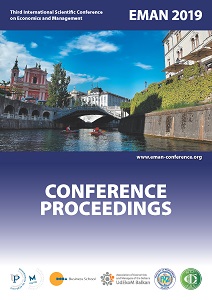THE CROPS SUPPLY’S PROSPECTS IN MONGOLIA: PRODUCTION, IMPORT AND POLICY IMPLICATIONS
THE CROPS SUPPLY’S PROSPECTS IN MONGOLIA: PRODUCTION, IMPORT AND POLICY IMPLICATIONS
Author(s): Amar Uuld, Róbert Magda
Subject(s): Agriculture
Published by: Udruženje ekonomista i menadžera Balkana
Keywords: Crop production;import;food supply level;self-sufficient rate;government policy;
Summary/Abstract: Crop production has been always main important sector but relatively small part of the Mongolian economy. As of 2017, agricultural sector produced approximately 11 percent of total GDP, which of agricultural production is more than 80 percent of livestock sector and less than 20 percent of crop production (NSO, 2017). Mongolia has a vast area of territory (18th-largest country in the world). However, of the 80% of the land covered with grassland and pastureland, crops have never been produced on less than 1% of the total land area of Mongolia (FAO, 2014). This study reviews Mongolia’s crop production’ current situation, focusing on Mongolia’s crops supply level, self-sufficient rate and government policy in the future. The results show that Mongolia’ policies for ensuring food supply level will be increased and Mongolia will pay attention to more domestic production. Mongolia’s crops self-sufficiency rate is 80 percent of flour and flour products, 107.7 percent of potato, 33.2 percent of vegetables and 0.7 percent of fruits and berries. By 2020, flour and flour products self-sufficiency rate are likely to increase to 100 percent, vegetables to 79 percent and fruits to 7.8 percent with associated government policy. However, fruits are still reliance on import.
Book: EMAN 2019 / 3 – Economics & Management: How to Cope with Disrupted Times - CONFERENCE PROCEEDINGS
- Page Range: 451-457
- Page Count: 7
- Publication Year: 2019
- Language: English
- Content File-PDF

